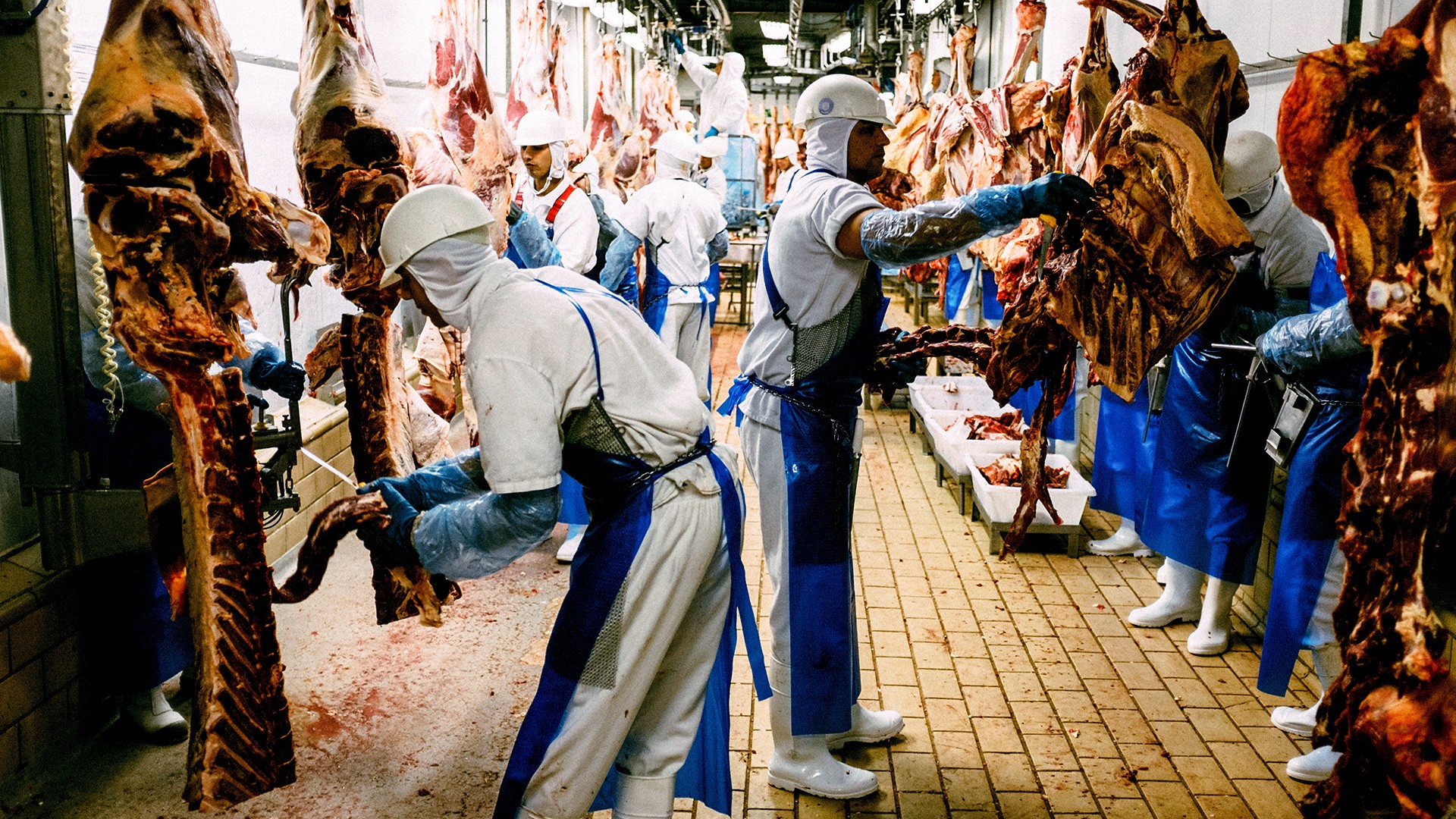Photo via Wikimedia Commons
You have already wasted hundreds of gallons of water today, and you probably don't even realize it. Where is all this invisible water going, you ask? The answer is simple: our food.You will never see the majority of water you consume in your lifetime, and this is because food comprises ⅔ of the average American's water footprint. Nothing that lands on your dinner plate gets there without the use of water: crops can't flourish without water; the grain we feed our livestock needs water to grow; and even the most processed, artificial foods utilize water during the manufacturing process. In fact, the agriculture industry is responsible for approximately 80% of the water used in the U.S.So—how to cut down on your water footprint without starving yourself? It's important to realize that when it comes to water, not all foods are created equal. In general, meat has a much larger water footprint than fruits, vegetables and grains. This is because of the massive amounts of virtual water that go into creating food for livestock. Beef—which is the second most popular meat in the U.S.—has the largest water footprint out of all types of meat, taking a whopping 1,800 gallons of water per pound. Obviously, cutting meat out of your diet altogether would be a great way to curb your personal water footprint. But if the thought of living a burger-free existence is too much to bear, not to worry—there are other ways to reduce your water footprint without giving up steak forever.
Check out more videos from VICE:
For some tips on where to start, VICE Impact talked with Peter Hanlon, Deputy Director of Programs at GRACE Communications Foundation—a leading, national non-profit devoted to promoting sustainability in food, water and energy systems—to get some answers.What goes into our water footprint, and how does food fit into that?When we talk about the water footprint, it's really about "virtual water" use versus "direct water" use. Most people are used to thinking about their direct water use—so, water that comes out of the tap, out of the shower, flushing the toilet, etc. But virtual water is the water that goes into producing the food we eat, the energy we use, and all the products we buy. People never see their virtual water use, so it's a harder concept to grasp. But it's really a key concept, because the largest part of our water footprint is the water that's used to grow the food that we eat.Why does meat have a greater water footprint than fruits, vegetables or grains?There's something called a "feed conversion ratio," which tells us how quickly livestock can turn whatever grain or feed that they're eating into mass. Some animals are pretty efficient, but cows are not so good at that. It takes a lot of grains or grasses to produce and grow these larger animals for meat. And all those grains and grasses take water to grow in turn. So the water footprint of meat is greater, because you're using products from lower on the food chain to grow something larger.Are there differences between the water footprints of meat raised on a factory farm versus meat raised on a free-range farm?When we're talking about raising livestock, a key concept to understand is that the water footprint is actually made of three parts: there's the green water footprint, the blue water footprint and the grey water footprint. The green water footprint, when it comes down to it, is essentially rainfall. The blue water footprint is the amount of water that's extracted from reservoirs, surface water and groundwater to irrigate fields. And then the grey water footprint is an indicator of the amount of pollution you're causing.For example, if you look at beef that is pasture raised, we're talking about a green water footprint because the animals are eating grass that's being fed by rainwater. But if you look at a more industrial system, we're talking about a larger blue water footprint; those cattle start on grass as well, but eventually they are switched over to feedlots where they're fed grains which are much more intensive in their needs for irrigation.Then there's also the pollution aspect, or grey water footprint. On a pasture-raised system, the waste that the cattle are producing is actually used as fertilizer, so it's a benefit. But if you're talking about an industrial system, you have 100,000 head of cattle all pooping in one place. And all that waste is typically moved into a manure lagoon, which is a massive pond of waste that often can leak. Waste can leak into the groundwater, it can leak into nearby bodies of water, so instead of that waste being a benefit, it can actually be a pollutant.On a personal level—if you don't want to go full vegetarian, how can you reduce your water footprint and still eat meat?First, eat less meat and better meat. In terms of "less meat," you can become "flexitarian," you can do "Meatless Mondays," or you can even just shrink the portion of meat that you're serving. Those are all positive things and you don't necessarily have to "go vegetarian." And then in terms of "better meat," if you choose pasture raised meat certified by a quality third party group—something like Animal Welfare Approved or Certified Humane—you can trust that meat will have less impact on water resources than conventionally raised meat.The second method to reduce your water footprint, would be eating fewer processed foods.
Whole foods use less water than processed foods. Once you start processing foods, that takes additional water for many different services—anything from creating oils that are used to cook foods to powering the plants that are processing these foods. That all raises the water footprint.And then finally, the third method of reducing your water footprint is to waste less food. About 40 percent of the food that's raised in the US is ultimately never eaten, and that accounts for nearly a quarter of the fresh water we consume in this country. All that waste is just an abhorrent abuse of resources that we have. Even the simplest thing in the world, like planning your meals before you go to the market, can save those resources.This interview has been edited and condensed for clarity.
Advertisement
Check out more videos from VICE:

For some tips on where to start, VICE Impact talked with Peter Hanlon, Deputy Director of Programs at GRACE Communications Foundation—a leading, national non-profit devoted to promoting sustainability in food, water and energy systems—to get some answers.What goes into our water footprint, and how does food fit into that?When we talk about the water footprint, it's really about "virtual water" use versus "direct water" use. Most people are used to thinking about their direct water use—so, water that comes out of the tap, out of the shower, flushing the toilet, etc. But virtual water is the water that goes into producing the food we eat, the energy we use, and all the products we buy. People never see their virtual water use, so it's a harder concept to grasp. But it's really a key concept, because the largest part of our water footprint is the water that's used to grow the food that we eat.
Advertisement
Advertisement
Whole foods use less water than processed foods. Once you start processing foods, that takes additional water for many different services—anything from creating oils that are used to cook foods to powering the plants that are processing these foods. That all raises the water footprint.And then finally, the third method of reducing your water footprint is to waste less food. About 40 percent of the food that's raised in the US is ultimately never eaten, and that accounts for nearly a quarter of the fresh water we consume in this country. All that waste is just an abhorrent abuse of resources that we have. Even the simplest thing in the world, like planning your meals before you go to the market, can save those resources.This interview has been edited and condensed for clarity.
